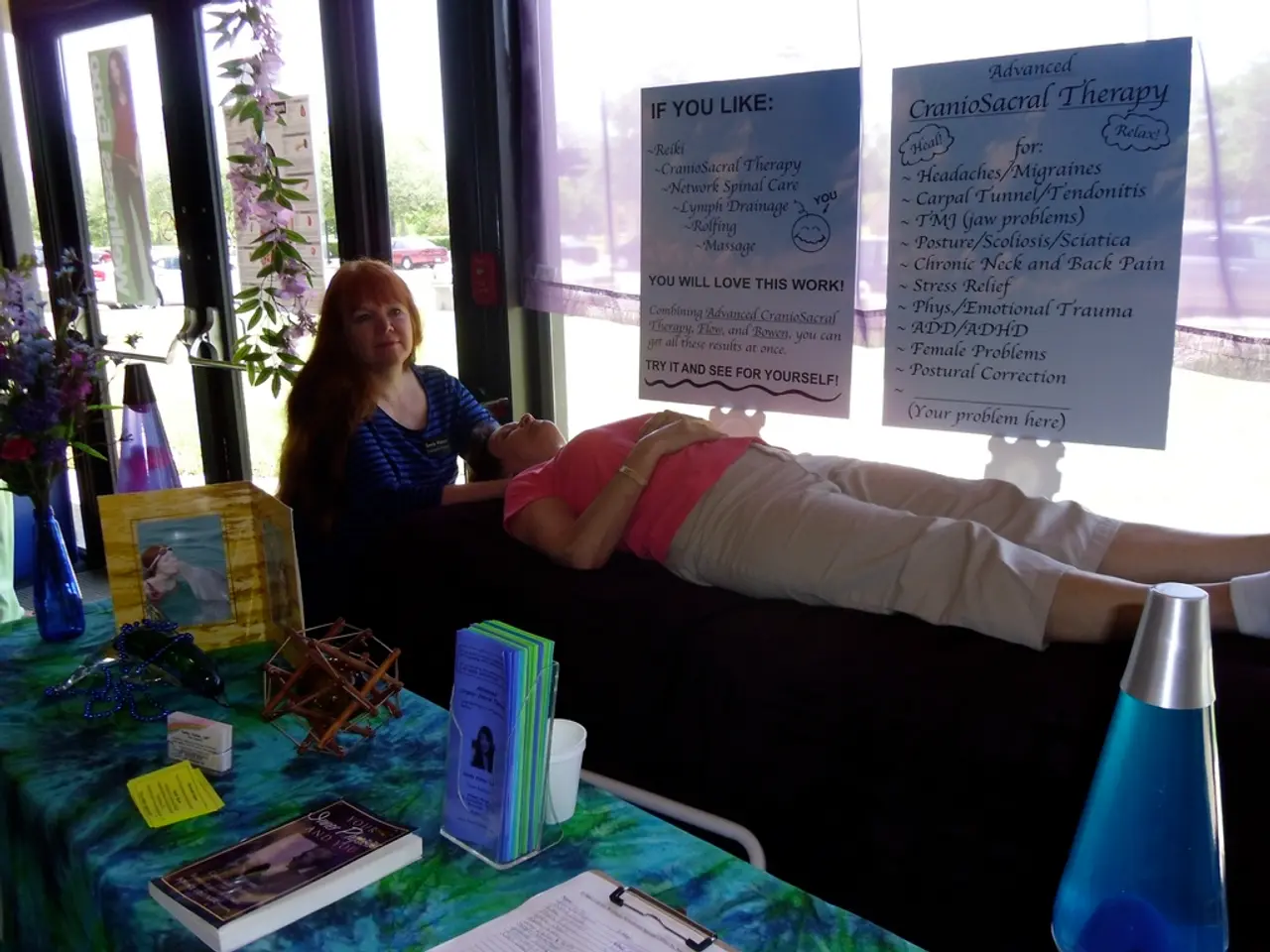Anxiety-related motor twitches, or tics, and their relationship with anxiety explored
In the realm of human behaviour, tics and anxiety are two phenomena that have long puzzled scientists and the general public alike. This article aims to shed light on the intricate relationship between these two conditions.
Tics, rapid, repetitive movements or sounds that can be difficult to control, are a common occurrence, particularly in the eyes, head, and shoulders, but they can also involve other parts of the body such as the mouth, hands, and arms. They may take the form of sounds (grunts, coughs, words, phrases) or movements (blinking, head jerks, finger clicks, touching others).
Contrary to popular belief, people who experience tics do not necessarily need to feel anxiety to have a tic attack. However, evidence suggests that tics tend to increase during periods of strong feelings, such as stress, nervousness, excitement, or tiredness. For some individuals, tics may intensify during anxious periods, although it's important to note that this does not equate to a formal diagnosis or an official symptom of anxiety.
Anxiety, on the other hand, is a complex mental health disorder that involves uncontrollable, distressing worry that a person cannot let go. The causes of anxiety can vary greatly from person to person, and it can stem from natural responses to challenges and pressure, significant life changes, periods of grief, bullying, or chronic health problems.
Interestingly, for some people, tics may be a feature of high anxiety. However, it's crucial to understand that a person with anxiety tics may not have an underlying tic disorder. Anxiety tics are not part of the formal criteria for diagnosing anxiety, and they are not a formal diagnosis themselves.
If a person's anxiety or tics are affecting their life, it is advisable to consult a physician. Medical treatment for tics is only usually necessary if they cause disruption to daily life, interference with social interactions, or significant pain. Techniques to reduce anxiety tics might include finding a relaxing hobby, prioritizing sleep hygiene, distraction techniques, breathing exercises, movement, and habit reversal training.
It's also worth noting that certain medications such as antipsychotic medications and alpha-2-adrenergic agonists may help to reduce the frequency of tics. However, the decision to use medication should always be made in consultation with a healthcare professional.
Lastly, it's important to mention that tics are suggestible, meaning that discussing them and drawing attention to them can increase their occurrence. This underscores the importance of a supportive and understanding environment for those living with tics and anxiety.
In conclusion, while tics and anxiety are distinct conditions, they can intertwine in complex ways. Understanding this relationship can help in providing better support and care for those affected.
Read also:
- Peptide YY (PYY): Exploring its Role in Appetite Suppression, Intestinal Health, and Cognitive Links
- Toddler Health: Rotavirus Signs, Origins, and Potential Complications
- Digestive issues and heart discomfort: Root causes and associated health conditions
- House Infernos: Deadly Hazards Surpassing the Flames








